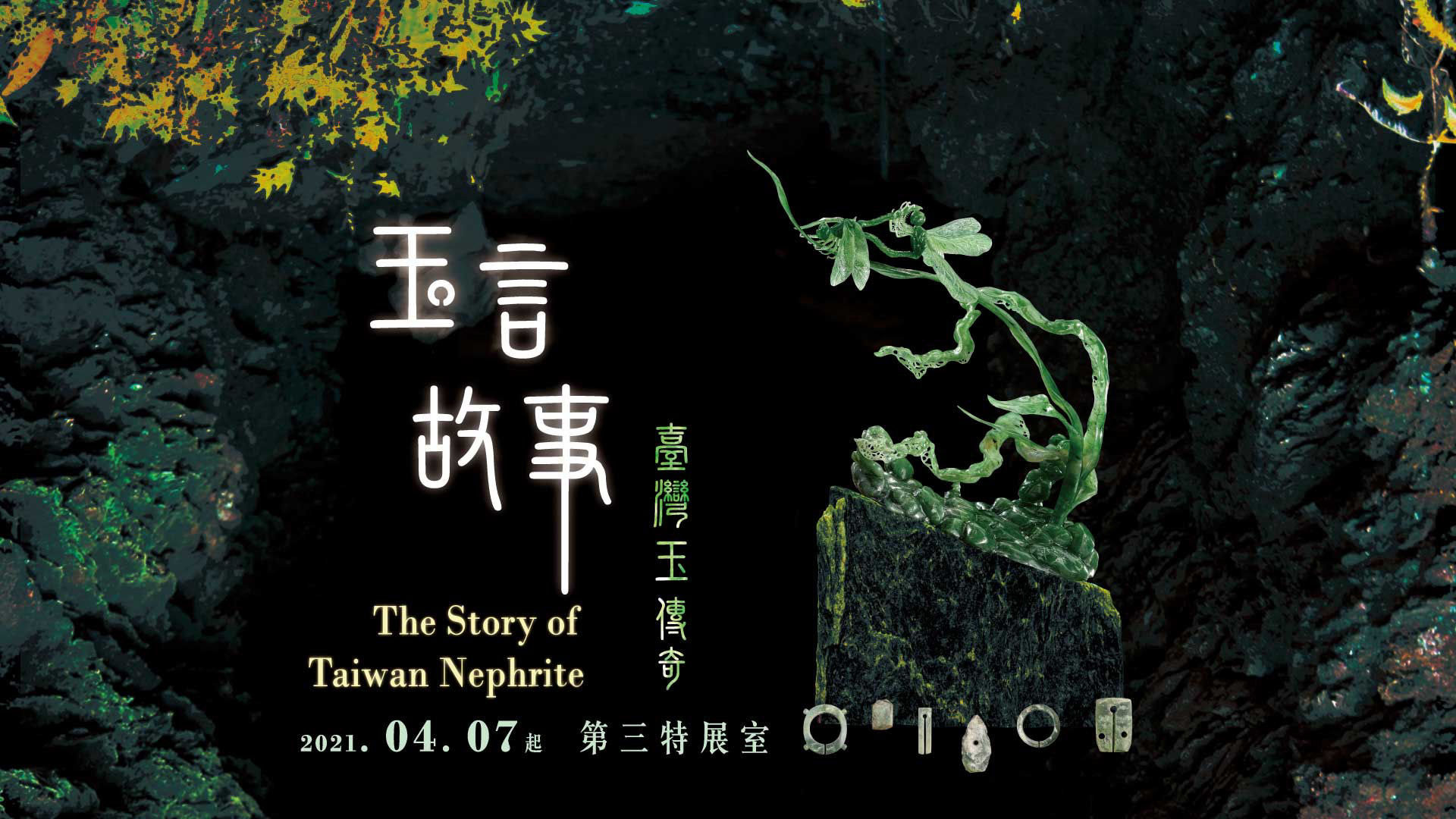

Raw jade, hidden in the valley
Gentle, elegant, tough, bright, and pure
Seen, admired, processed, and cherished by the ancestors
A cultural lifeline spanning thousands of years
Continuing to dazzle even now
This is Taiwan nephrite
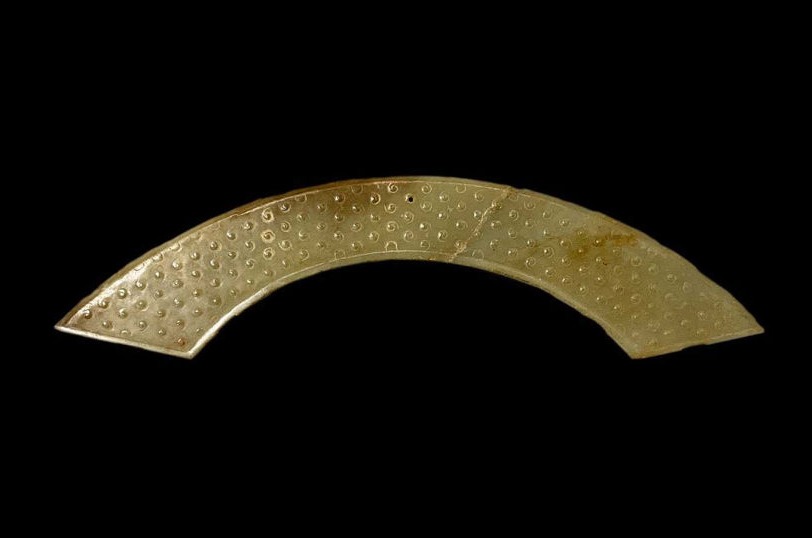
Jade objects were used by ancestors of the ethnic Chinese people 8,000 years ago. In early Chinese history, ritual objects were made from jade. In addition, many Chinese sayings include jade as a metaphor for nobility or virtue. For example, “flawless white jade, impeccable integrity”. In the Chinese language, there are more than 100 characters with the jade radical. Jade axes, dagger-axes, gui, and cong from the Neolithic period point to a shift from practical to religious purposes. As the nobility used jade objects for worship and ornamentation, they became associated with social class and power. In the Shang and Zhou dynasties, there were six types of ritual objects for paying respects to the gods of heaven, earth, and the four directions. Bi is a round disc and cong is a square tube, both with a central hole. Gui is a pointed tablet. Resembling gui is zhang, which possesses an oblique blade and flat rectangular body with hole. Hu has a tiger pattern or shape, while huang is a crescent-shaped ornament. Other jade objects include ornaments, funerary objects, swords, and accessories.
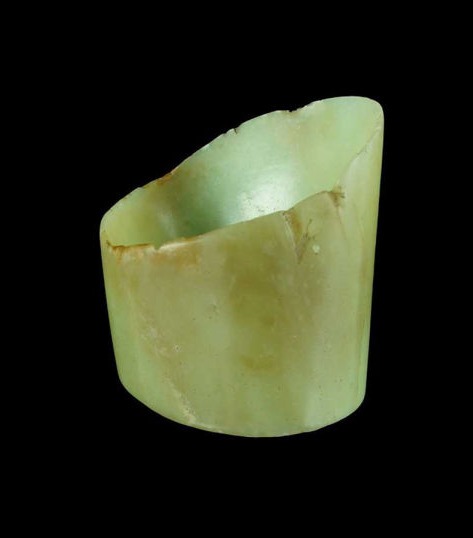
Modern mineralogists define “jade” as nephrite, which is mainly composed of tremolite, and jadeite, a pyroxene mineral with composition NaAlSi2O6. Major nephrite production areas include Taiwan, China, Russia, Korea, Papua New Guinea, Australia, New Zealand, the US, Canada, Poland, Switzerland, Italy, and Zimbabwe. The major jadeite deposit in the world is Myitkyina in northern Myanmar followed by Guatemala, Japan, and the US. In China, jade objects have been excavated from many archaeological sites. The Hongshan culture and the Liangzhu culture are among the more representative Neolithic jade cultures. Near the Motagua River in Guatemala is a Central American jadeite production area. There, jade objects have been excavated. Ancient cultures that used jade objects include the Olmec civilization , Maya civilization , and ancient civilizations of Costa Rica. Among them, the Maya civilization is the most well-known. The Austronesian Maori people use nephrite to produce tools, weapons, ornaments, and images of deities.
Taiwan nephrite is also called Taiwan jade or Fengtian jade. It is mainly found within the contact zones of serpentinite and black schist in the Fengtian area of Hualien County. Nephrite is formed via hydrothermal alteration of serpentinite, often in association with asbestos and talc. Tang Li-Ping, a former geosciences professor at National Taiwan University, divided Taiwan nephrite into three types: Common nephrite, Waxy nephrite, Cat’s-eye nephrite. In one specimen there exists all three types, waxy nephrite (center), cat’s-eye nephrite (outer thin layer), and common nephrite (outermost layer). This is called dragon-like jade or dragon-like nephrite.
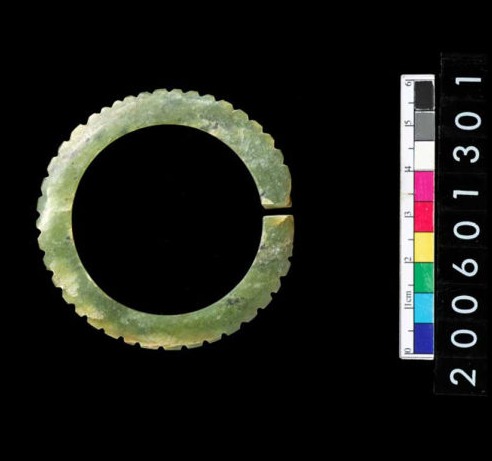
Jade objects have been excavated from Neolithic sites all over Taiwan, revealing the abundant use of Taiwan jade at that time. Moreover, different types of jade objects have been found in different places. At the Zhiyagan site, located in a Taiwan jade production area, has been discovered large amounts of jade scraps. The Peinan Culture produced the most types of jade objects, many of them unique in shape and form. Jade combs have only been found in central Taiwan. There are also some similarities. For example, jade zoomorphic ornaments have been excavated all over Taiwan. However, they vary in style and size. In addition, tools such as jade adzes, chisels, and spearheads have been seen in Neolithic sites in different parts of the island.
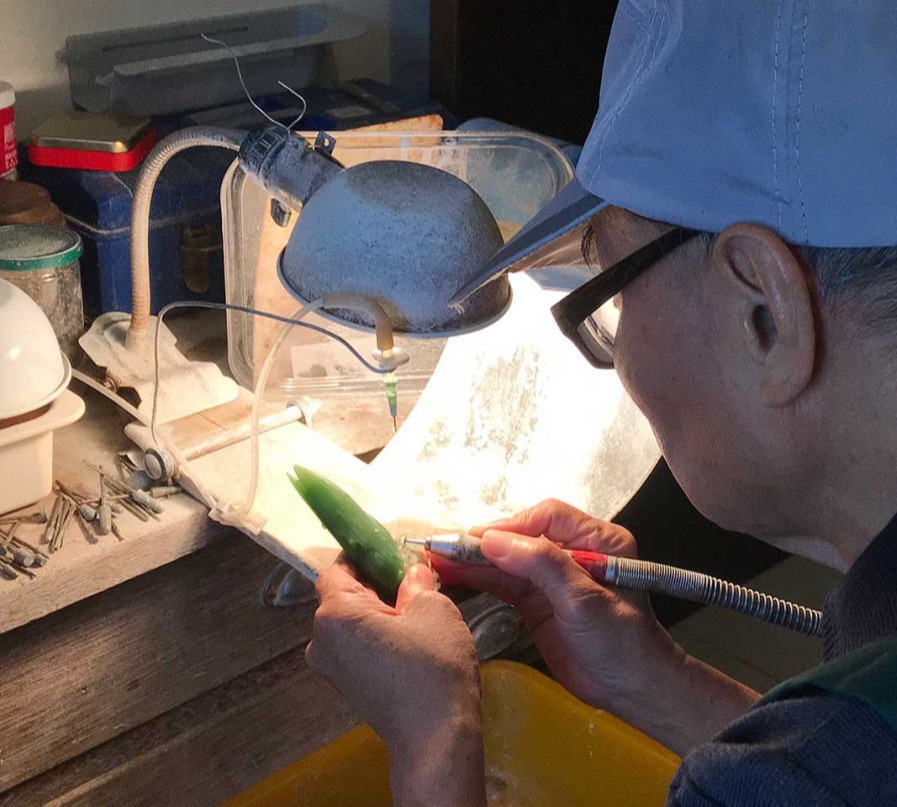
Although jade objects are categorized as stone objects, Taiwan nephrite is harder than most types of stone, requiring advanced stone treatment methods. This represented a great expansion of the technical knowledge of prehistoric peoples. Based on era and type, several techniques were used to create prehistoric jade objects. Those who have studied prehistoric jade treatment techniques in Taiwan have suggested that they are similar to those of the Liangzhu culture based on tube boring tools, jade cores, cutting along the inner and outer peripheries of rings, and line patterns.Modern techniques are that Jade is extracted in large blocks, brought down from the mountains, and graded. Then, it is processed to create jewelry and accessories as follows: Cutting, Design, Formation of prototype, Grinding and trimming, Polishing and Assembly.
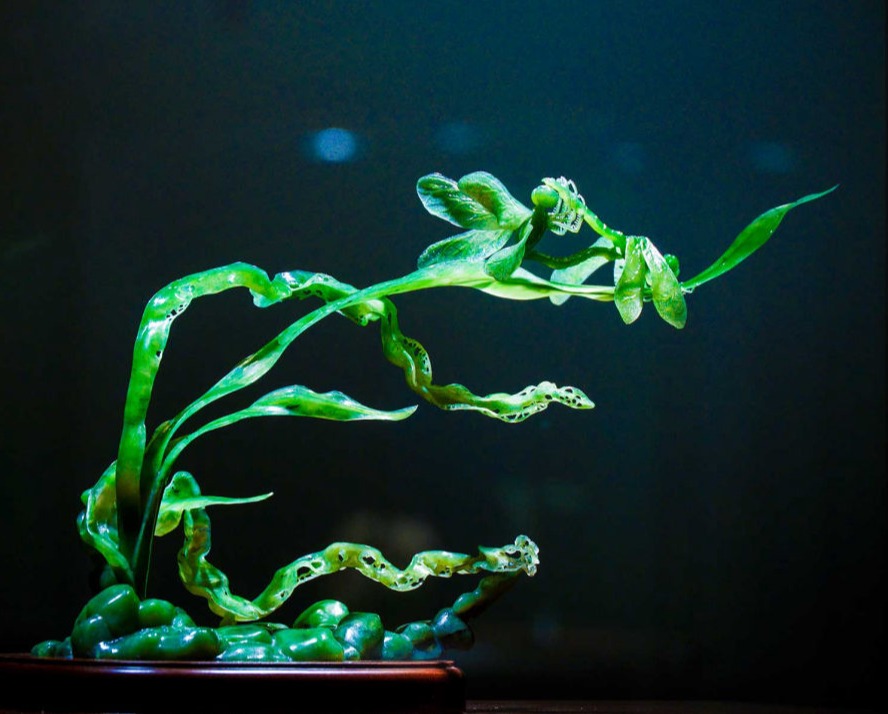
Raw Taiwan nephrite is often polished to create display pieces. If accompanied by poetry, a different artistic conception is expressed. As nephrite is formed in blocks and semi-translucent, it can be used to create jewelry and accessories. By grinding into round or convex elliptical shapes, bracelets, earrings, pendants, and bead necklaces can be produced. In Taiwan, some nephrite is unique for its cat’s-eye effect. It was the first in the world to be discovered and successfully processed. When finished, the ray at the center of the cat’s eye moves.
In Taiwan, jade carvings, in addition to being based on traditional techniques, have become more exquisite in recent years due to the efforts of the government to promote the creative and cultural industries. Jade carvers make use of the features of Taiwan jade, while adding their creativity and ingenious designs, producing works that are moving and that greatly elevate the artistic value of Taiwan jade. This special exhibition includes the works of three master jade carvers: Huang Yi-Hsiung, Huang Fu-Shou, and Huang Nan-Chiang. Through their exquisite carving techniques, jade is given even greater cultural depth.
Apr. 7 - Dec. 19, 2021
The 3rd Exhibition Gallery
Copyright by National Museum of Natural Science.